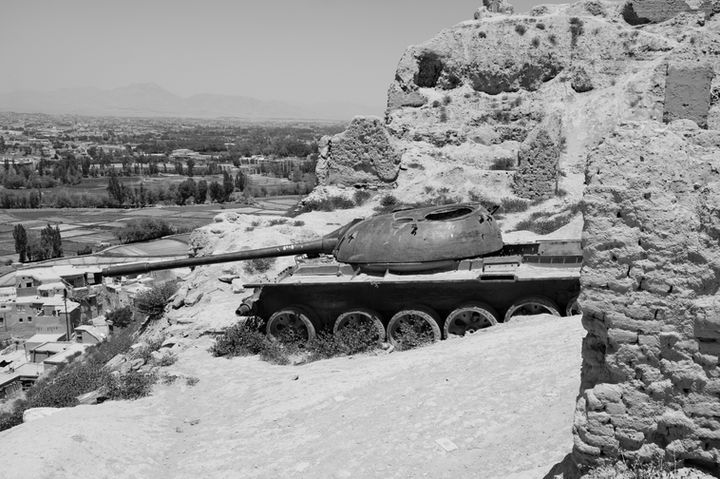Afghanistan Journal | Ghazni | May 2025
'The Tank Graveyard of the Taliban'

About three hours south of Kabul is the city of Ghazni, a city of almost 200,000 located along the main highway from Kabul to Kandahar. The city has had a turbulent history in modern times, it saw significant fighting during both Soviet and U.S. wars, with much of the city experiencing a varying degree of destruction. Ghazni was one of the first cities the Soviets handed over to the Afghan Government (then the Democratic Republic of Afghanistan, a soviet backed socialist government) and saw fierce fighting with the Mujahadeen. This photo journal follows a young man called Qasim who lives in a village on the edge of Ghazni, whom I met on the bus from Kabul.

It is unknown when the market town of Ghazni was founded, but it has been conquered by various empires throughout its time. It became part of the Persian Empire in the 6th century BC and later conquered by Alexander the Great in 329 BC. The city has hosted various religions throughout history including Zoroastrianism and Buddhism before being conquered by the Arabs in 683 and converting to Islam. The city has a host of ancient structures both in ruins and still used.

A forty-five-meter-tall medieval citadel sits in the middle of Ghazni, built in the 13th century, it saw heavy damage during the past forty years of conflict. A large sign reading ‘Allah’ (God) is displayed looking over the city. It is a place some teenagers and student come to hang out and relax.

Part of the citadel, destroyed from the conflicts in the last four decades, and littered with bullet holes.

A Soviet T-54 tank sits where it was abandoned sometime in the 1980s, its turret still pointing down onto the neighbourhood at the foot of the citadel.

Soviet made BTR-70 armored vehicles leftover from the war lined up along the Ghazni River, A triumph of Mujahadeen resistance to the Red Army.

Just like the roads leading into the Hazarajat, the villages around Ghazni contain cemeteries of Taliban fighters. The number of Taliban flags within them increases however as you travel down the highway to Kandahar, as many of the men in the graves were killed fighting U.S. and Nato forces. Many of these villages are off bounds to foreigners due to hostilities from the locals.

Plenty of U.S. weapons and vehicles were destroyed and left behind in Ghazni. In 2018 the Taliban launched an offensive into the city, killing hundreds of Afghan Army soldiers and police, and capturing government bases. U.S. special forces confirmed they engaged the Taliban even though the U.S. had formally ended combat missions in 2014. The attack flared up hostilities, and Ghazni was subject to air strikes and widespread destruction.

Hamidullah Mohammad, a Taliban commander, lived through both foreign military interventions of Ghazni after joining the Mujahadeen to help repel the Soviets in 1981. He explains how the Afghanistan of today is the ‘one he has dreamed of’ and how ‘Allah has always protected the Afghan people for invaders’. His story is HERE


Soviet heavy guns left behind and seized by the then Mujahadeen.

A fuselage of a Soviet Mil MI-24 shot down by the Mujahadeen.

A wall reading ‘Islamic Emirate of Afghanistan’, the Taliban’s name for the country.

Littered around the edge of Ghazni, ancient ruins covered in bullet holes, likely destroyed in the conflicts, stand forgotten about.

A road running past the university in Ghazni, a Taliban flag on every streetlight, a sight common in many Afghan cities. The city of Ghazni Illustrates the decades of conflict Afghanistan has endured greater than many other cities within the country with the remnants of two world powers unable to conquer it.